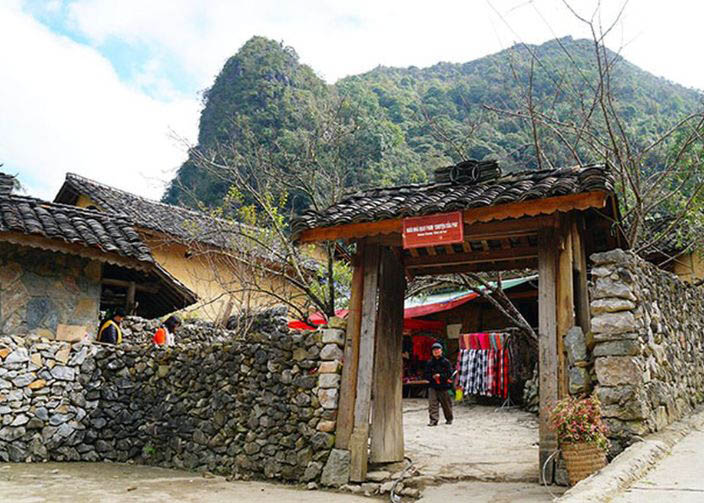Unique architecture of the H’mong people’s house gates
On the Dong Van Karst Plateau, amidst layers of rugged mountains, the gate of a H’mong household is not merely an entrance but also holds sacred meaning - a symbol of strength, prosperity, and a way of life closely tied to nature.
 |
For generations, the H’mong people on the plateau have built their homes in harmony with the mountainous terrain and the harsh natural environment. Within this architectural complex, the house gate plays a vital role, serving as both an aesthetic highlight and an expression of the community’s cultural and spiritual values.
The gates are often built from natural stone, skillfully stacked without the use of mortar. On the firm stone foundation stand two cunninghamia wood pillars supporting a horizontal beam and a roof covered with tiles or wooden shingles, forming a solid yet graceful structure that blends harmoniously with the surrounding stone fences.
Each stone and each wooden beam is carefully selected, symbolizing the homeowner’s strength, endurance, and aspiration for a better life.
The gate not only shields against cold winds and preserves the family’s private space but also marks a sacred boundary between the outside world and the domestic sphere. The H’mong believe that household gods reside at the gate to protect the family, so it is always kept clean and well-maintained.
During festivals and traditional celebrations, the gate is often decorated with corn bundles, hemp strings, or traditional patterns, representing wishes for bountiful harvests and a peaceful, prosperous life.
Hai Dang





READER COMMENTS